Abstract
Recordings have been made of afferent activity from spindles of the jaw-closing muscles, together with jaw movement and e.m.g. from temporalis and masseter in conscious, unrestrained cats. 2. In the twenty-nine units studied, the pattern of spindle behaviour observed during eating and lapping was generally what might be expected of stretch receptors. Maximal firing frequencies were found during opening of the mouth (lengthening), while during active closing the discharge was progressively reduced or abolished. Nevertheless, changes in the relation of stretch to firing frequency in different movements indicated that fusimotor drive was not constant. 3. spindle afferents could be divided into two groups on the basis of their maximal firing frequency during eating. "High-frequency" units (range 240-600 impulses/sec) showed pronounced velocity sensitivity, which supports the proposal that they correspond to spindle primaries. 'Low-frequency" units (range 80-200 impulses/sec) showed predominantly length sensitivity and probably correspond to secondary endings. 4. Length sensitivity of low-frequency units was considerably greater in lapping movements than in eating, indicating increased static fusimotor drive in the former. Sensitivity in the opening phase of eating was indistinguishable from that recorded in deeply anaesthetized animals. 5. High-frequency units were generally silenced immediately active shortening commenced. 6. No simple relationship existed between temporalis or masseter e.m.g. and spindle firing. 7. These results imply that normal masticatory movements are not initiated or driven to any appreciable extent via the fusimotor route. Close alpha-gamma co-activation is not a feature of this situation. On the other hand, in some other movements, such as licking the lips, fusimotor drive could fluctuate so as largely to cancel the unloading effects of active muscle shortening.
Full text
PDF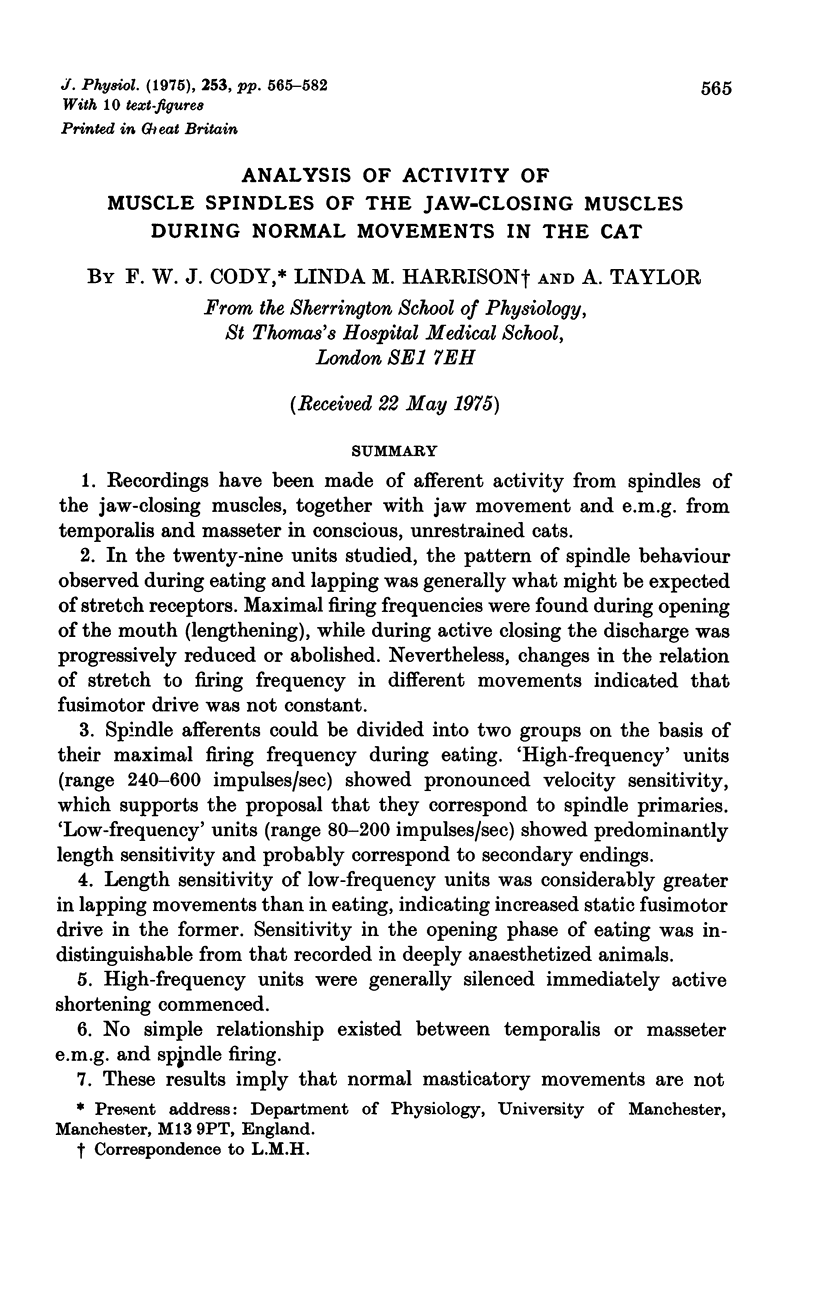
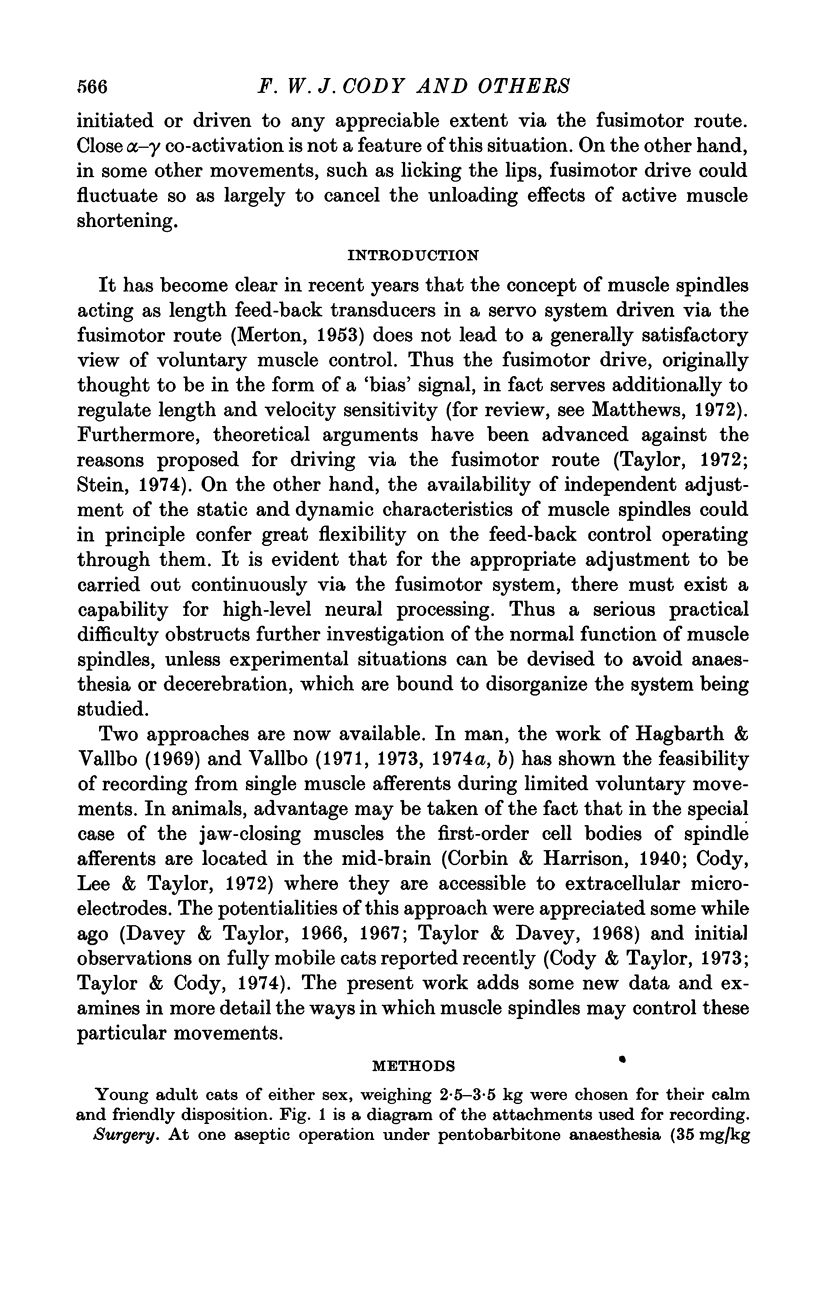
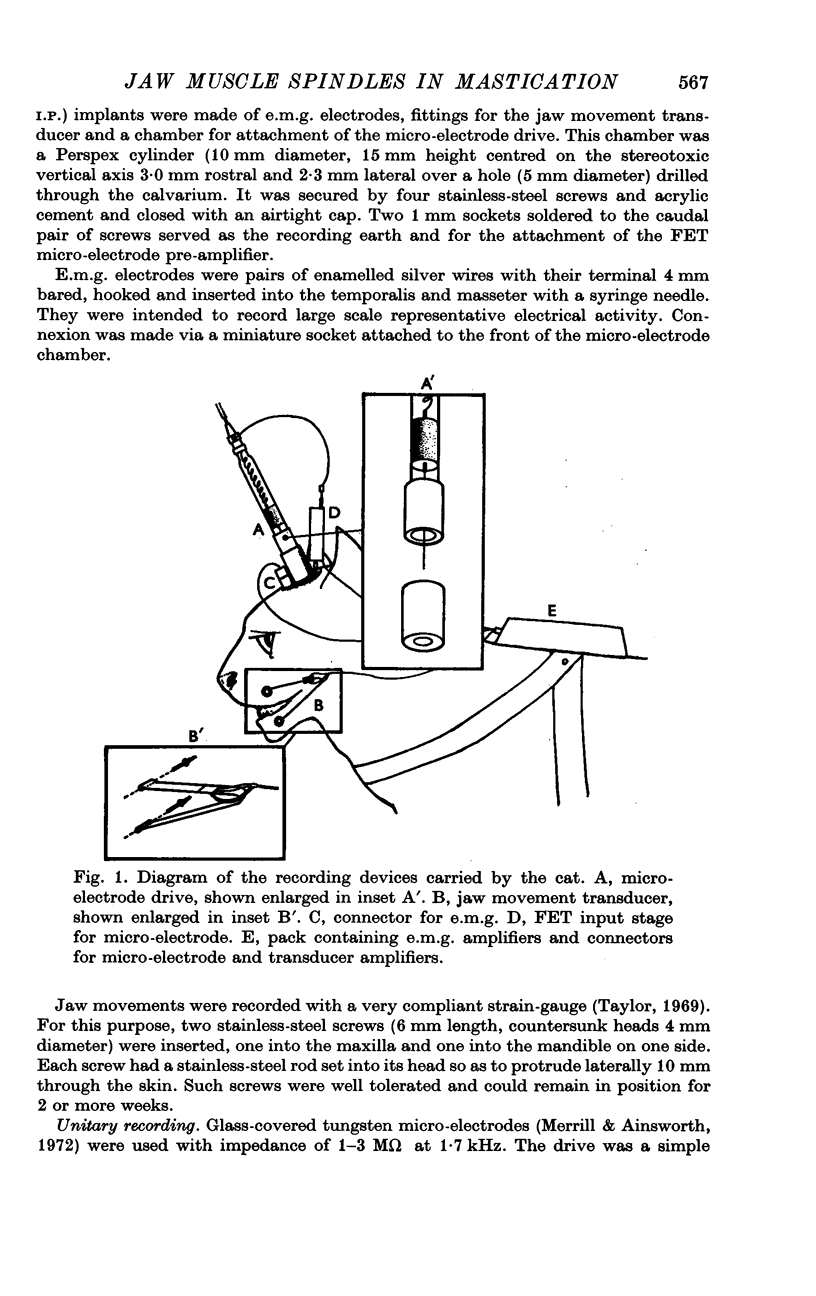
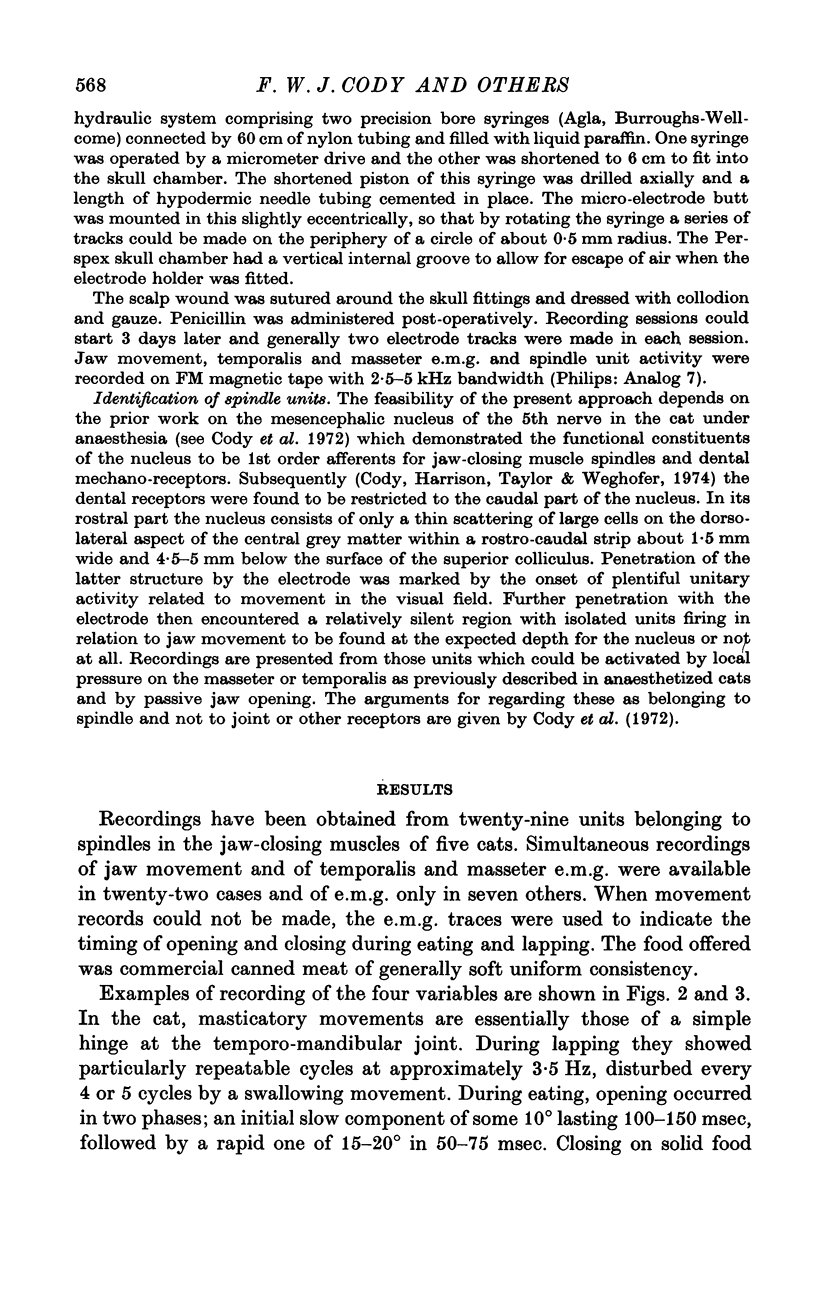

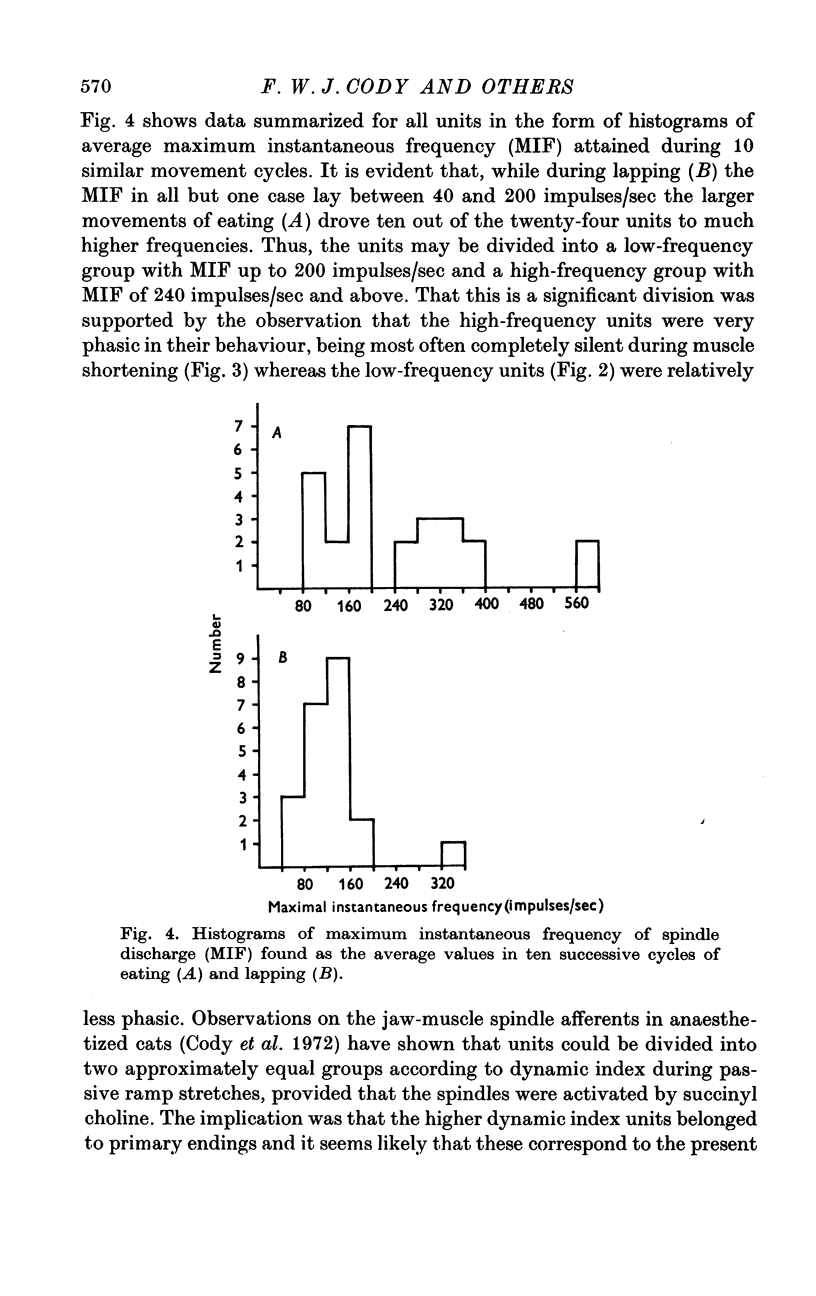
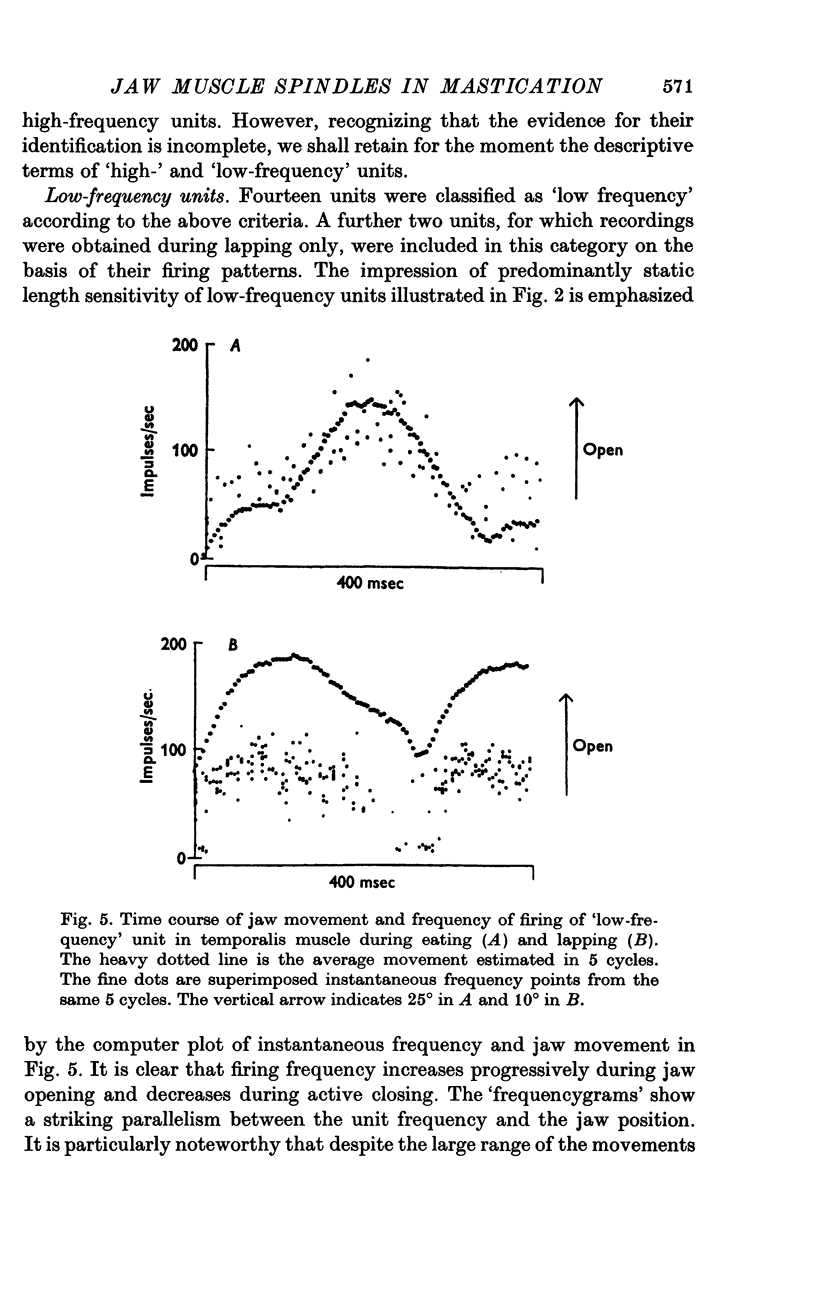
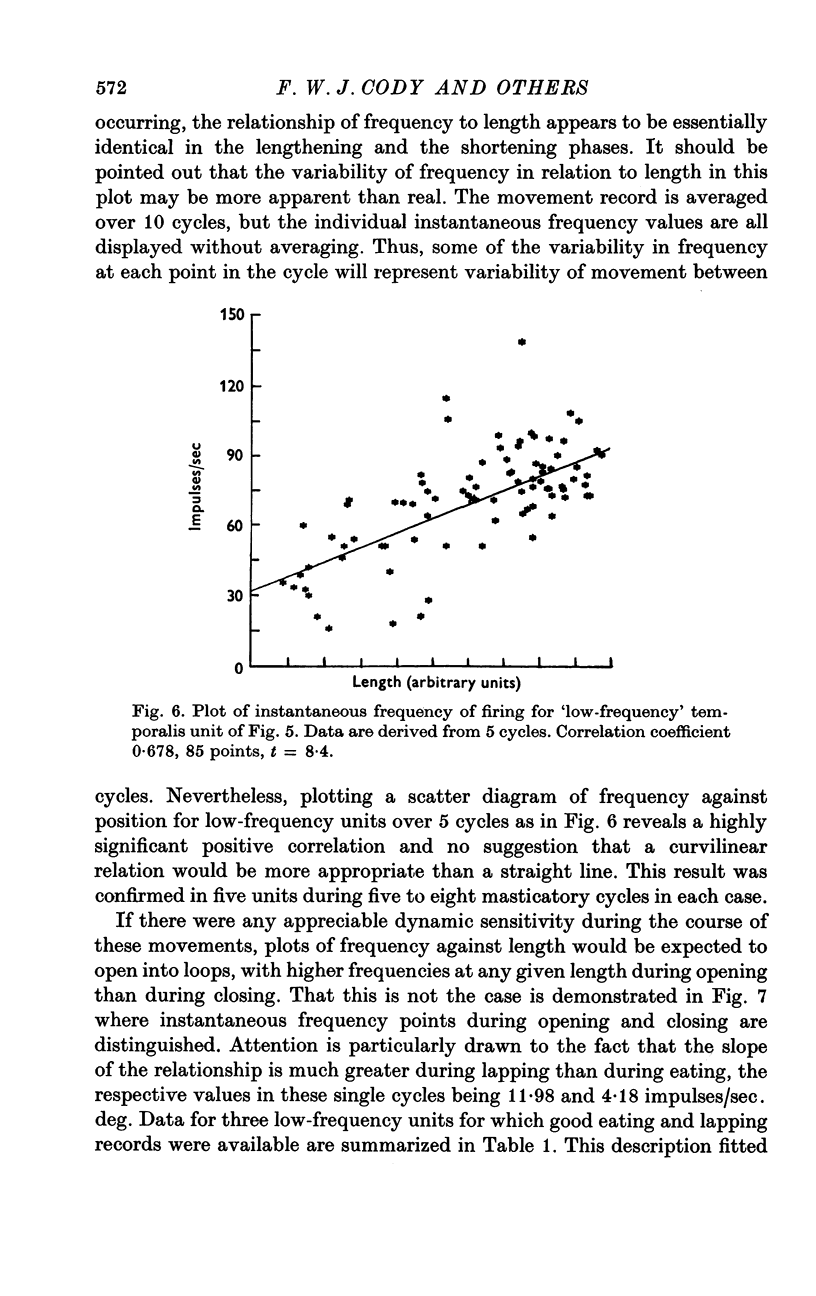
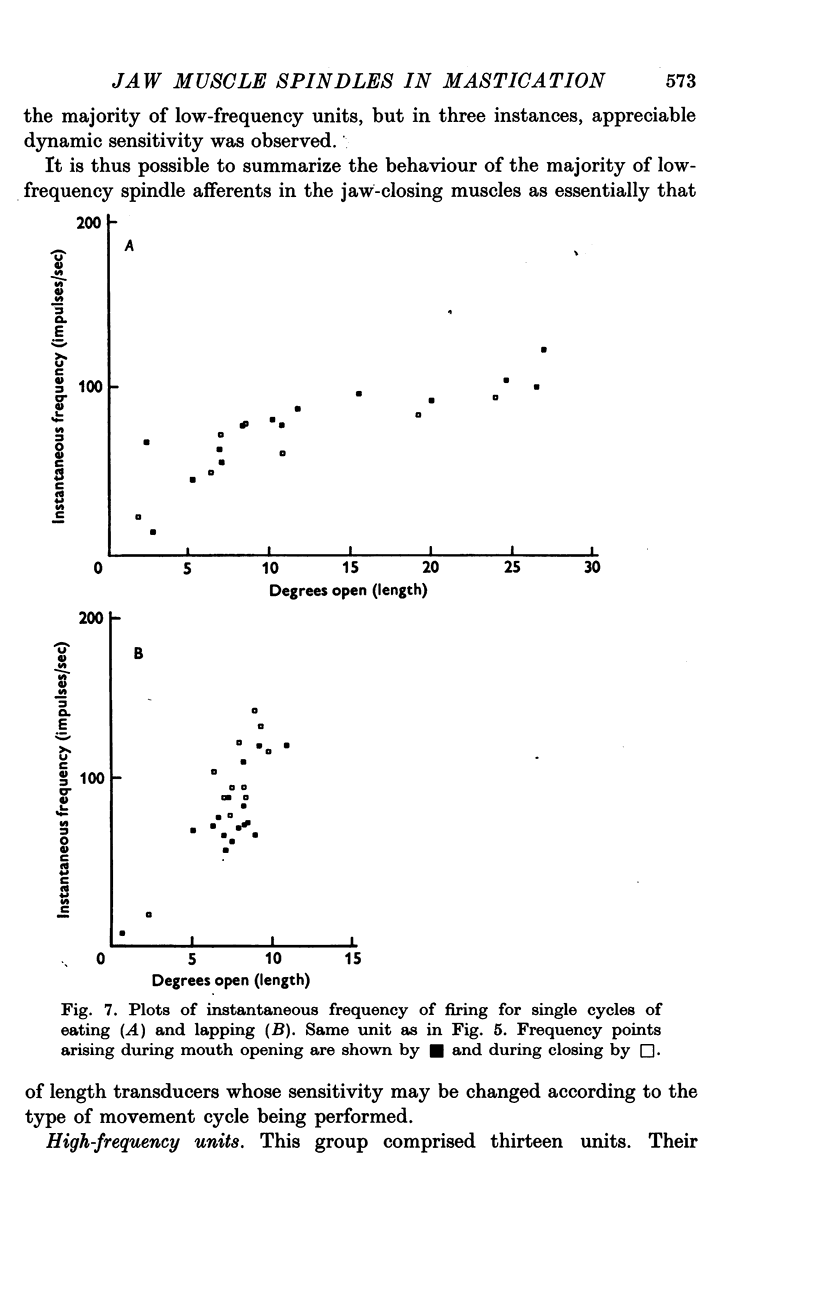

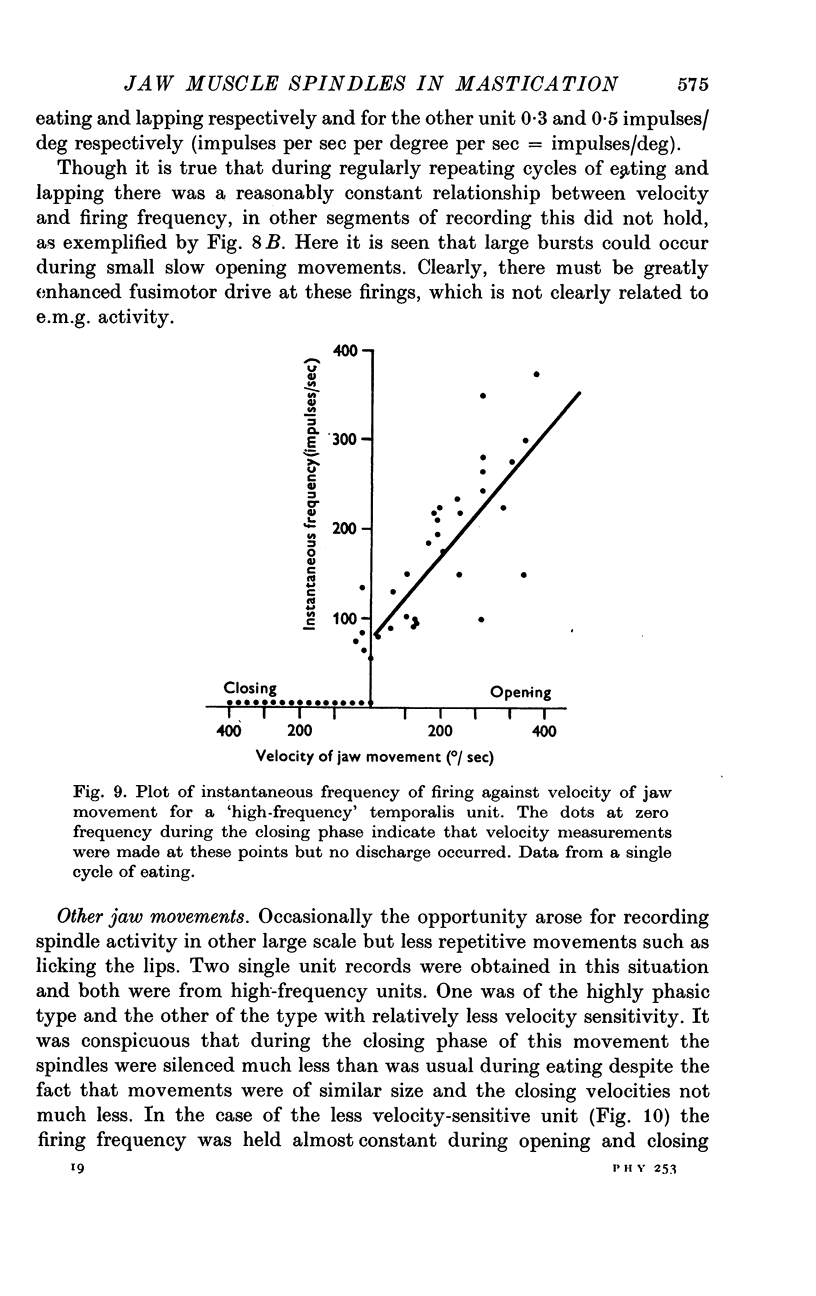
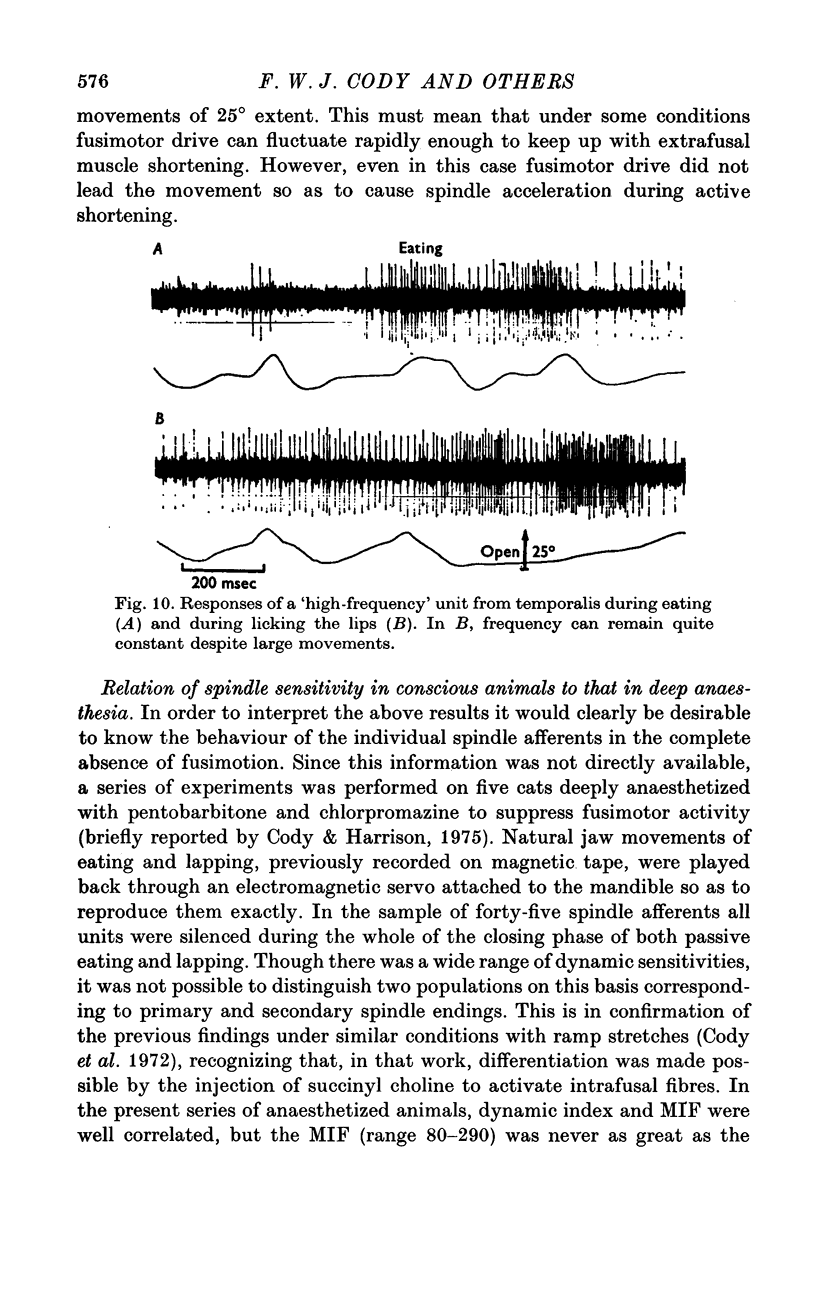
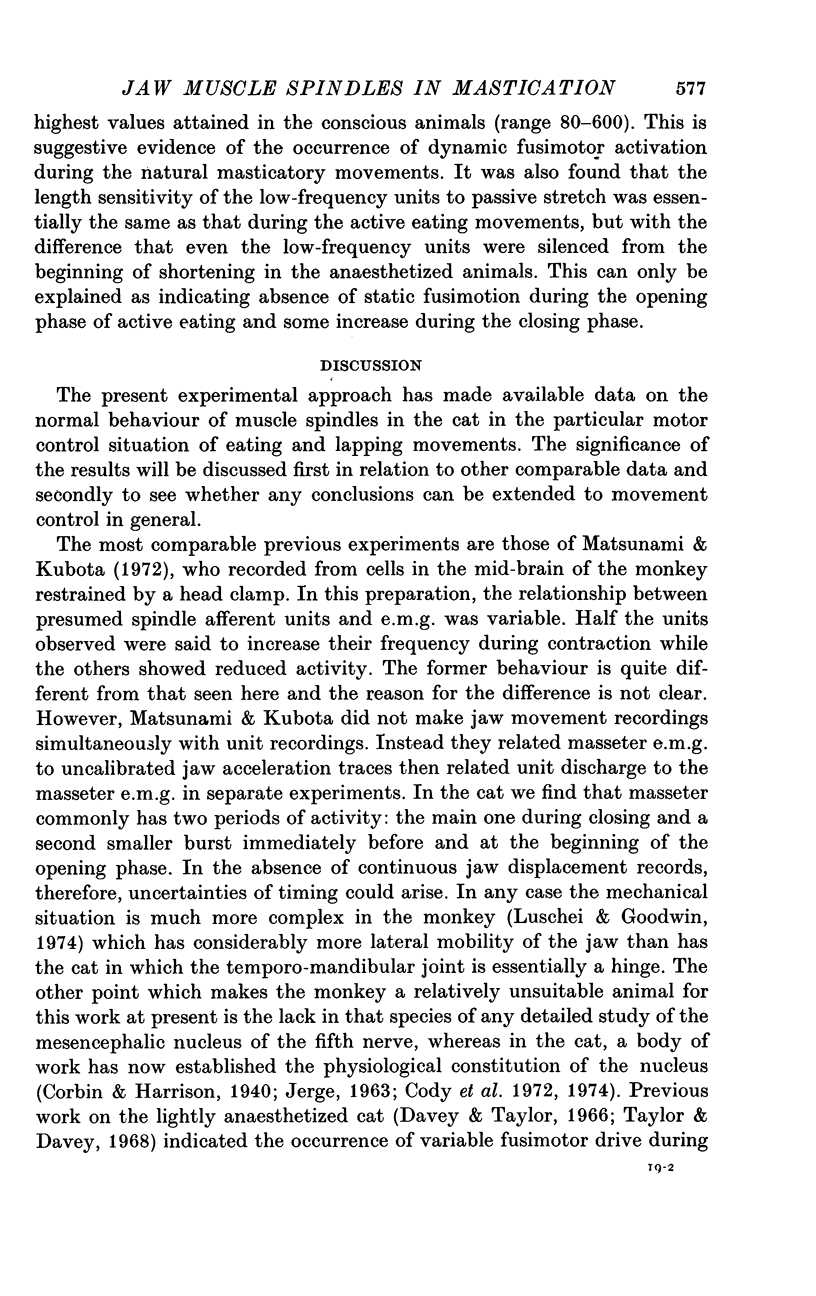
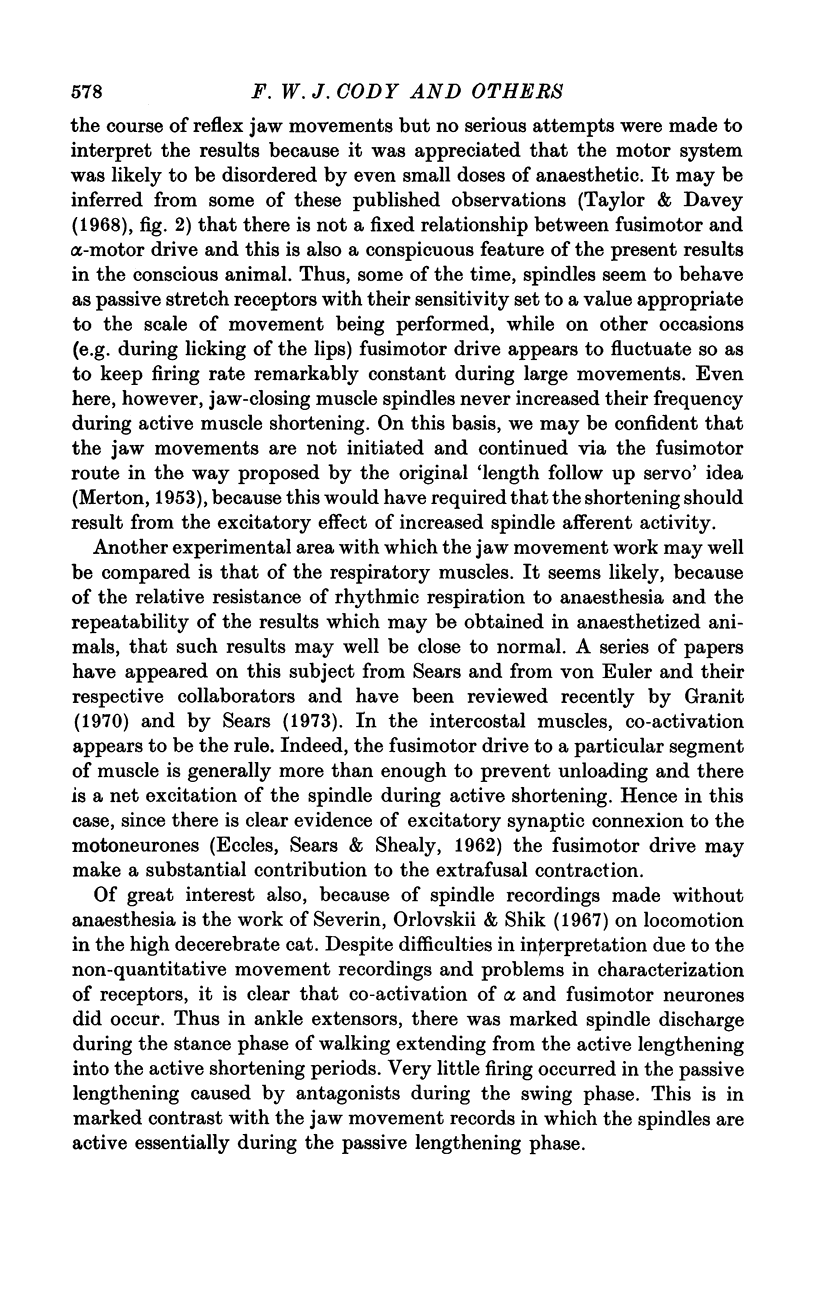
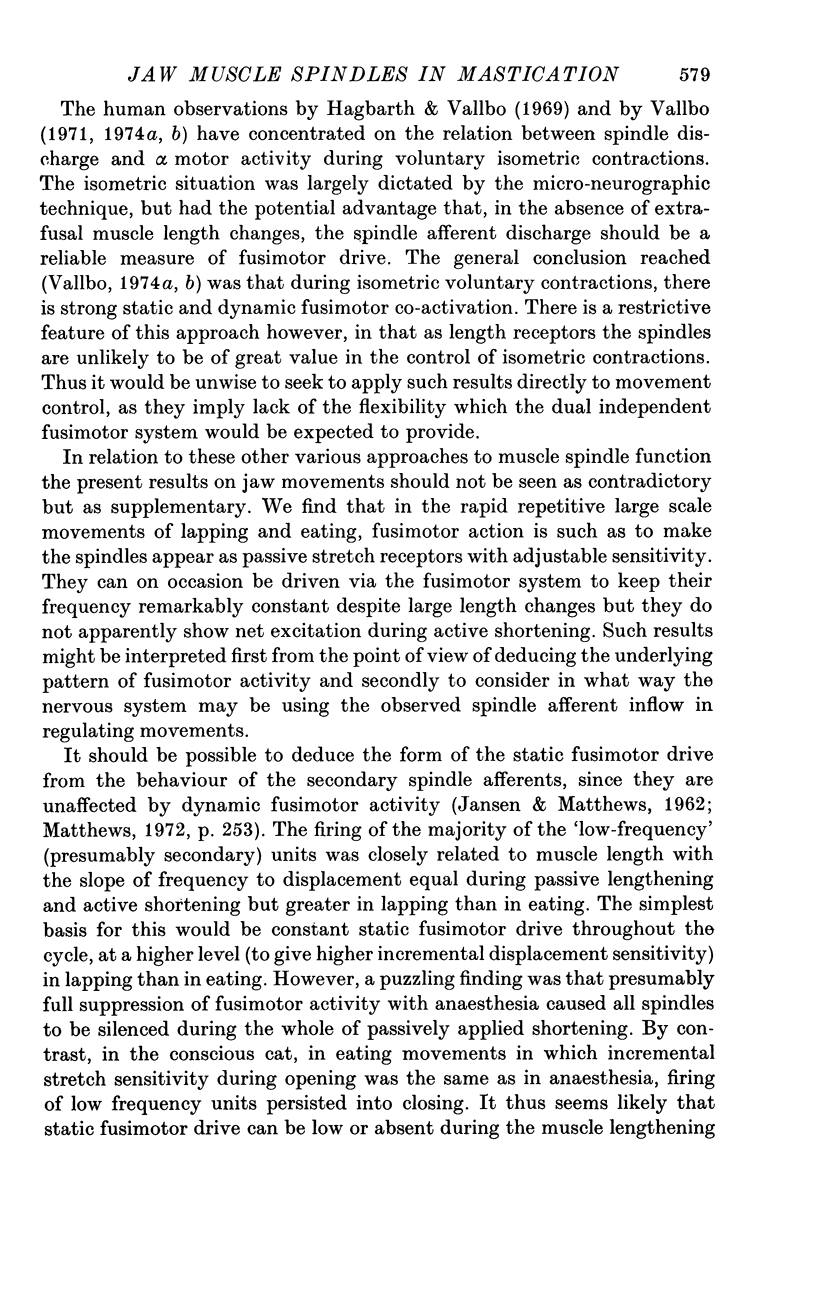
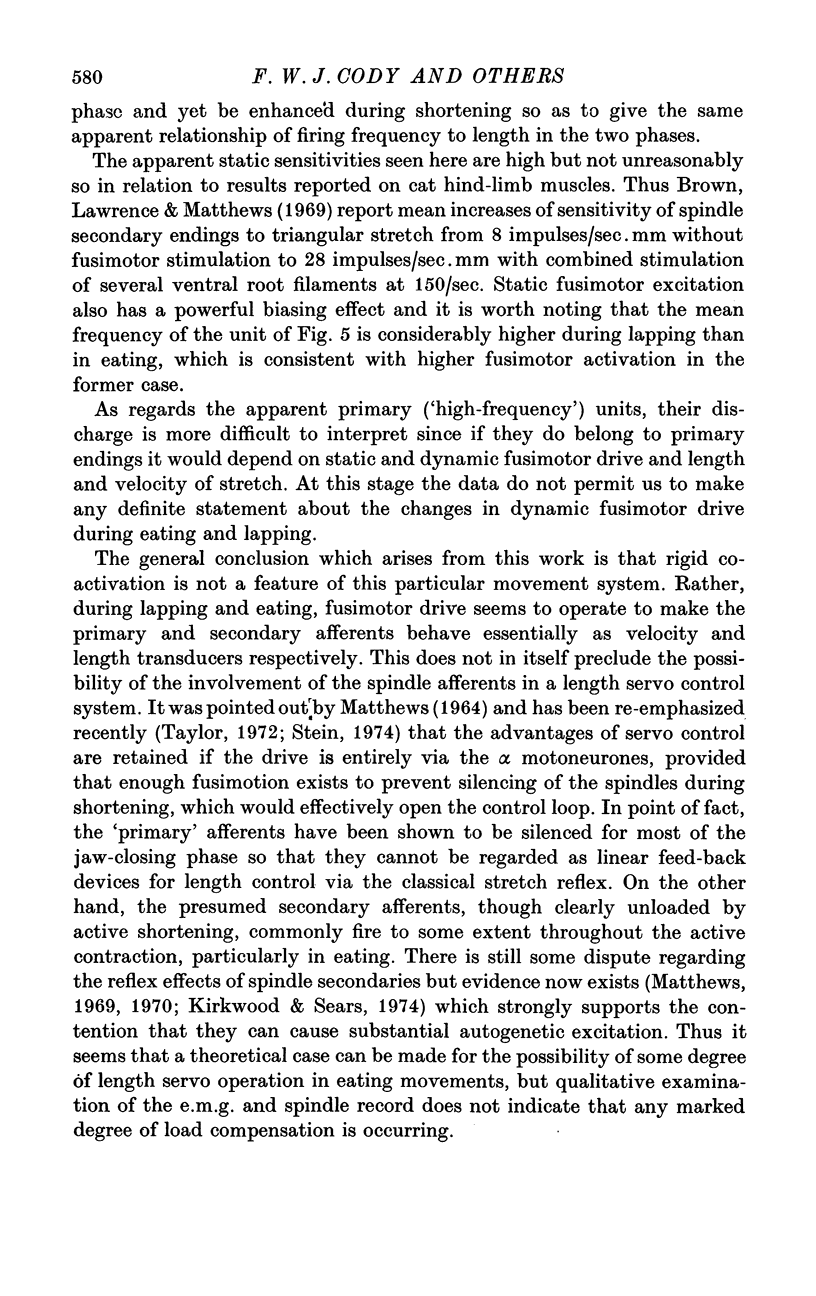
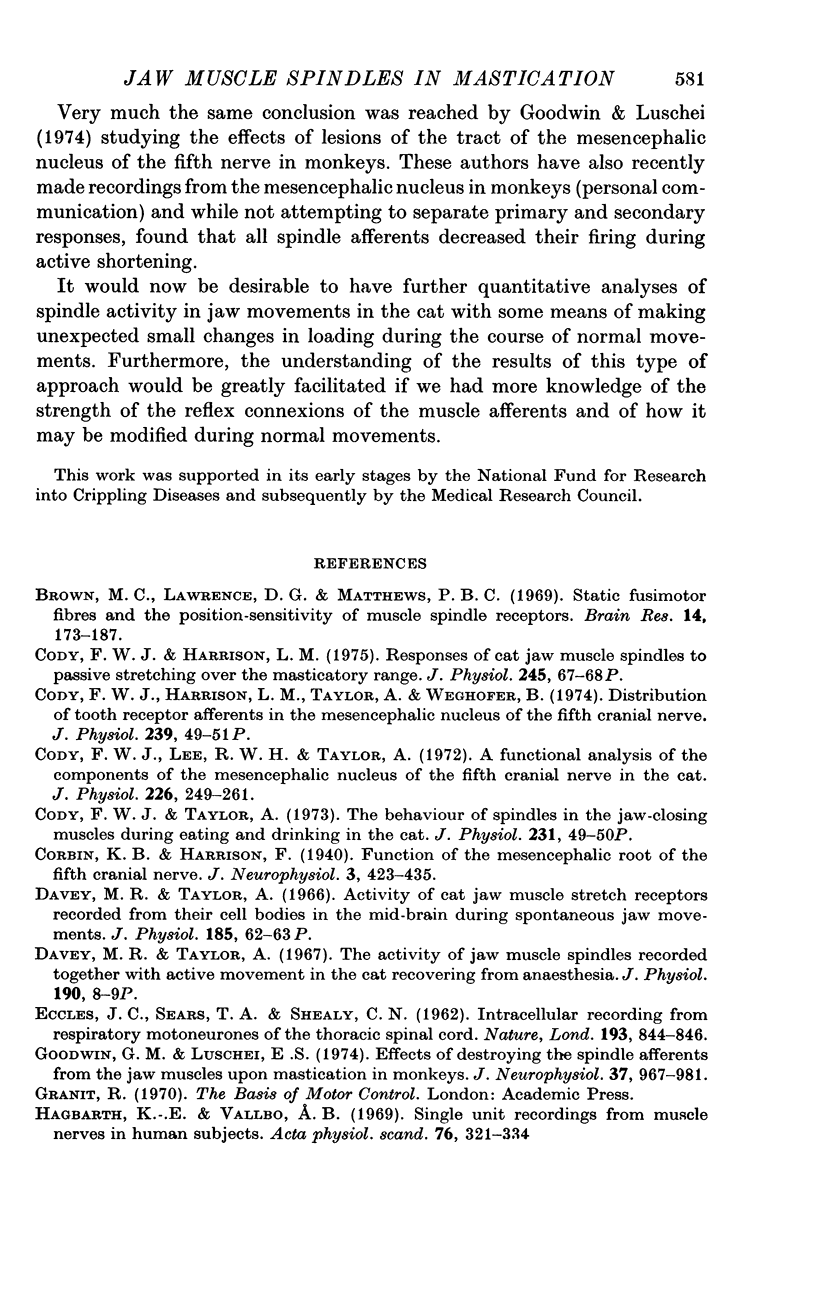
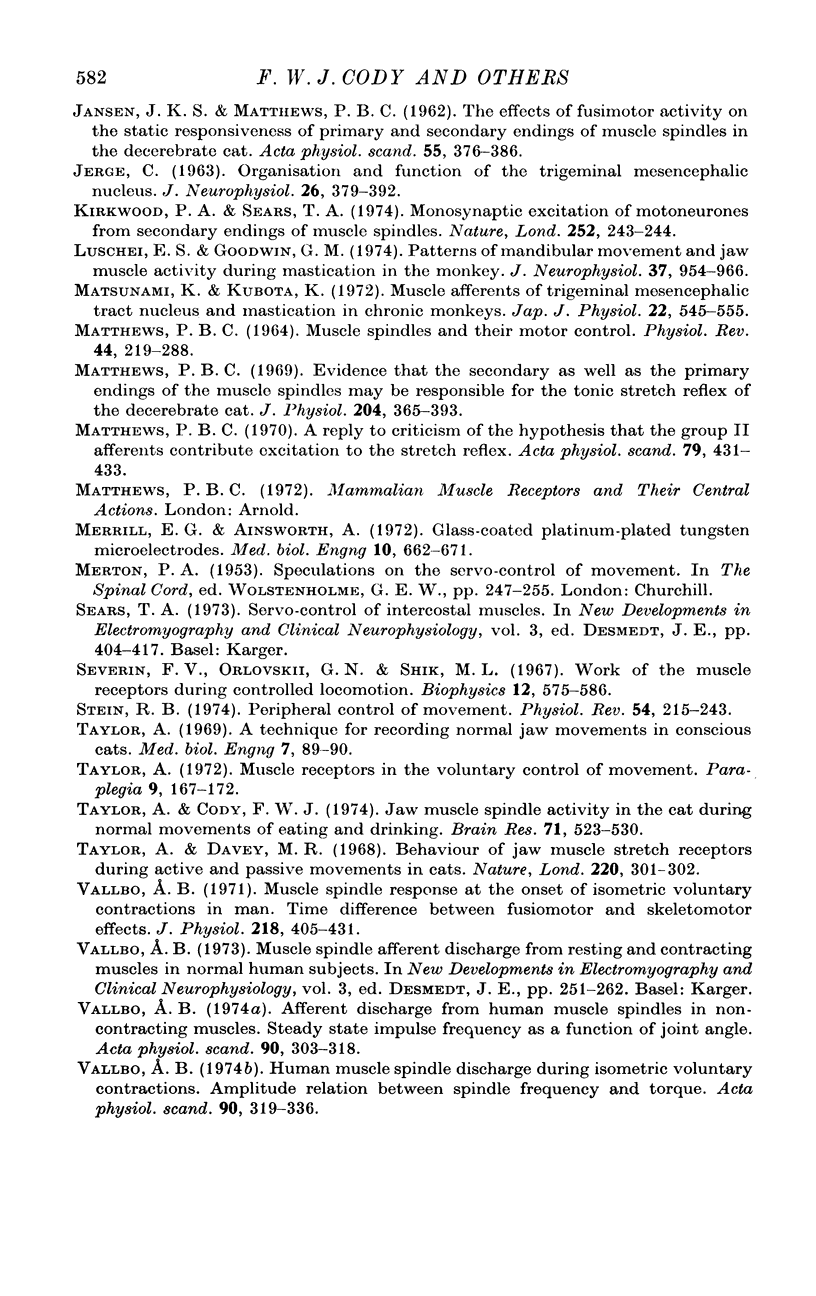
Selected References
These references are in PubMed. This may not be the complete list of references from this article.
- Brown M. C., Lawrence D. G., Matthews P. B. Static fusimotor fibres and the position sensitivity of muscle spindle receptors. Brain Res. 1969 Jun;14(1):173–187. doi: 10.1016/0006-8993(69)90038-9. [DOI] [PubMed] [Google Scholar]
- Cody F. W., Harrison L. M. Responses of cat jaw muscle spindles to passive stretching over the masticatory range. J Physiol. 1975 Feb;245(2):67P–68P. [PubMed] [Google Scholar]
- Cody F. W., Harrison L. M., Taylor A., Weghofer B. Proceedings: Distribution of tooth receptor afferents in the mesencephalic nucleus of the fifth cranial nerve. J Physiol. 1974 May;239(1):49P–51P. [PubMed] [Google Scholar]
- Cody F. W., Lee R. W., Taylor A. A functional analysis of the components of the mesencephalic nucleus of the fifth nerve in the cat. J Physiol. 1972 Oct;226(1):249–261. doi: 10.1113/jphysiol.1972.sp009983. [DOI] [PMC free article] [PubMed] [Google Scholar]
- Cody F. W., Taylor A. The behaviour of spindles in the jaw-closing muscles during eating and drinking in the cat. J Physiol. 1973 May;231(1):49P–50P. [PubMed] [Google Scholar]
- Davey M. R., Taylor A. The activity of jaw muscle spindles recorded together with active jaw movement in the cat recovering from anaesthesia. J Physiol. 1967 May;190(2):8P–9P. [PubMed] [Google Scholar]
- ECCLES R. M., SEARS T. A., SHEALY C. N. Intra-cellular recording from respiratory motoneurones of the thoracic spinal cord of the cat. Nature. 1962 Mar 3;193:844–846. doi: 10.1038/193844a0. [DOI] [PubMed] [Google Scholar]
- Goodwin G. M., Luschei E. S. Effects of destroying spindle afferents from jaw muscles on mastication in monkeys. J Neurophysiol. 1974 Sep;37(5):967–981. doi: 10.1152/jn.1974.37.5.967. [DOI] [PubMed] [Google Scholar]
- Hagbarth K. E., Vallbo A. B. Single unit recordings from muscle nerves in human subjects. Acta Physiol Scand. 1969 Jul;76(3):321–334. doi: 10.1111/j.1748-1716.1969.tb04475.x. [DOI] [PubMed] [Google Scholar]
- JANSEN J. K., MATTHEWS P. B. The effects of fusimotor activity on the static responsiveness of primary and secondary endings of muscle spindles in the decerebrate cat. Acta Physiol Scand. 1962 Aug;55:376–386. doi: 10.1111/j.1748-1716.1962.tb02451.x. [DOI] [PubMed] [Google Scholar]
- JERGE C. R. Organization and function of the trigeminal mensencephalic nucleus. J Neurophysiol. 1963 May;26:379–392. doi: 10.1152/jn.1963.26.3.379. [DOI] [PubMed] [Google Scholar]
- Kirkwood P. A., Sears T. A. Monosynaptic excitation of motoneurones from secondary endings of muscle spindles. Nature. 1974 Nov 15;252(5480):243–244. doi: 10.1038/252243a0. [DOI] [PubMed] [Google Scholar]
- Luschei E. S., Goodwin G. M. Patterns of mandibular movement and jaw muscle activity during mastication in the monkey. J Neurophysiol. 1974 Sep;37(5):954–966. doi: 10.1152/jn.1974.37.5.954. [DOI] [PubMed] [Google Scholar]
- MATTHEWS P. B. MUSCLE SPINDLES AND THEIR MOTOR CONTROL. Physiol Rev. 1964 Apr;44:219–288. doi: 10.1152/physrev.1964.44.2.219. [DOI] [PubMed] [Google Scholar]
- Matsunami K., Kubota K. Muscle afferents of trigeminal mesencephalic tract nucleus and mastication in chronic monkeys. Jpn J Physiol. 1972 Oct;22(5):545–555. doi: 10.2170/jjphysiol.22.545. [DOI] [PubMed] [Google Scholar]
- Matthews P. B. A reply to criticism of the hypothesis that the group II afferents contribute excitation to the stretch reflex. Acta Physiol Scand. 1970 Jul;79(3):431–433. doi: 10.1111/j.1748-1716.1970.tb04743.x. [DOI] [PubMed] [Google Scholar]
- Matthews P. B. Evidence that the secondary as well as the primary endings of the muscle spindles may be responsible for the tonic stretch reflex of the decerebrate cat. J Physiol. 1969 Oct;204(2):365–393. doi: 10.1113/jphysiol.1969.sp008918. [DOI] [PMC free article] [PubMed] [Google Scholar]
- Merrill E. G., Ainsworth A. Glass-coated platinum-plated tungsten microelectrodes. Med Biol Eng. 1972 Sep;10(5):662–672. doi: 10.1007/BF02476084. [DOI] [PubMed] [Google Scholar]
- Stein R. B. Peripheral control of movement. Physiol Rev. 1974 Jan;54(1):215–243. doi: 10.1152/physrev.1974.54.1.215. [DOI] [PubMed] [Google Scholar]
- Taylor A. A technique for recording normal jaw movements in conscious cats. Med Biol Eng. 1969 Jan;7(1):89–90. doi: 10.1007/BF02474674. [DOI] [PubMed] [Google Scholar]
- Taylor A., Cody F. W. Jaw muscle spindle activity in the cat during normal movements of eating and drinking. Brain Res. 1974 May 17;71(2-3):523–530. doi: 10.1016/0006-8993(74)90996-2. [DOI] [PubMed] [Google Scholar]
- Taylor A., Davey M. R. Behaviour of jaw muscle stretch receptors during active and passive movements in the cat. Nature. 1968 Oct 19;220(5164):301–302. doi: 10.1038/220301a0. [DOI] [PubMed] [Google Scholar]
- Taylor A. Muscle receptors in the control of voluntary movement. Paraplegia. 1972 Feb;9(4):167–172. doi: 10.1038/sc.1971.28. [DOI] [PubMed] [Google Scholar]
- Vallbo A. B. Afferent discharge from human muscle spindles in non-contracting muscles. Steady state impulse frequency as a function of joint angle. Acta Physiol Scand. 1974 Feb;90(2):303–318. doi: 10.1111/j.1748-1716.1974.tb05593.x. [DOI] [PubMed] [Google Scholar]
- Vallbo A. B. Human muscle spindle discharge during isometric voluntary contractions. Amplitude relations between spindle frequency and torque. Acta Physiol Scand. 1974 Feb;90(2):319–336. doi: 10.1111/j.1748-1716.1974.tb05594.x. [DOI] [PubMed] [Google Scholar]
- Vallbo A. B. Muscle spindle response at the onset of isometric voluntary contractions in man. Time difference between fusimotor and skeletomotor effects. J Physiol. 1971 Oct;218(2):405–431. doi: 10.1113/jphysiol.1971.sp009625. [DOI] [PMC free article] [PubMed] [Google Scholar]


